D I S A S T E R S O F
T H E D E E P
by the same author
Non Fiction
A Damned Un-English Weapon.
The Killing Time.
The Devils Device.
Captains of War.
Operation Pacific.
Hitlers Battleships.
Fiction
No Survivors.
Action Atlantic.
Tokyo Torpedo.
Last Command.
Fighting Submarine.
Devil Flotilla.
Diving Stations.
Crash Dive 500.
D I S A S T E R S O F
T H E D E E P
A Comprehensive Survey of
Submarine Accidents and Disasters
by
EDWYN GRAY
First published as Few Survived in Great Britain 1986 by
LEO COOPER
in association with Seeker and Warburg Ltd,
Reissued in 1996 by
Pen & Sword Books Ltd
47 Church Street
Barnsley, S. Yorks, S70 2AS
This third revised and updated edition is published in 2003 by
LEO COOPER
an imprint of Pen & Sword Books Ltd
Copyright by Edwyn Gray, 1986, 1996, 2003
A CIP record for this book is available from
The British Library
ISBN 0 85052 987 5
The right of Edwyn Gray to be identified as the author of this Work
has been asserted by him in accordance with the Copyright,
Designs and Patent Act, 1988
All rights reserved. No part of this publication may be
reproduced, in any form by any means, without permission
from the publishers.
Printed in Great Britain by
CPI UK
Contents
To Vivienne with love
During the seven years that have passed since the second edition of Few Survived was published many more Cold War accidents have been de-classified and are now in the public domain. Several make chilling reading. It has also been a period packed with unusual incidents such as the bizarre fate of the survivors from two North Korean submarine accidents, two fatal encounters between nuclear submarines and fishing trawlers, as well as similar but lesser incidents in home waters and abroad. The Kursk disaster, of course, dominated the first year of the new millennium and its aftermath rumbled on for nearly two more years. This Russian tragedy and some other accidents also brought political repercussions in their wake the first time that politics has entered into the centuries-old saga of underwater disasters. And, worryingly, several other incidents in recent years suggest that the lessons gleaned from past tragedies have not been adequately assimilated.
Ongoing research continues to uncover new and additional facts which have a bearing on certain incidents described in the original text and I would like to take this opportunity to mention briefly some significant matters that require updating.
To begin with it has been established that, although John Day was the first man to lose his life in a submarine disaster [see Effendi, foundered in Constantinople harbour during a demonstration of its diving abilities. Happily her five-man crew escaped unharmed.
The puzzling double sinking of Russias Kambala [page 62] has also now been resolved. The report in The Times History of the Great War of her loss at Kronstadt in 1909 proved to be erroneous and, on further investigation, was found to refer to the foundering of Delfin on 20 June 1904, an accident described earlier on page 50. Kambala, in fact, sank only once when she was rammed by a Russian battleship on 12 June 1909 and was never salvaged.
Due to a mistaken date details of C.12s accident on the River Humber [page 82] were placed out of chronological order. The submarine actually sank on 6 October 1918 but was not salvaged until 2 February 1920. It should also be noted that an unintentional ambiguity in my account of the collision between E.4 and E.41 on 15 August 1916 seemed to imply that the entire crew of E41 were saved [page 88]. Sadly this was not the case for sixteen crew members mainly engine-room personnel were posted as missing following the accident. I am indebted to Mr M.I. Frewer, a grandson of Leading Stoker Walter Frewer, one of those who did not survive, for bringing the correct facts to my notice.
The statistics of submarine losses in the First World War quoted at the beginning of Chapter Seven have been extensively revised and the reader is referred to Appendix Four which has been fully updated to reflect the most recent research available.
HMS Affrays tragic loss in 1951 [pages 200205] continues to throw up surprises and attract media attention despite the passing of half a century. Some of the information that has surfaced in recent years helps to resolve the so-called mystery of her loss and is important enough to merit further detailed examination. This will be found in the new Chapter Fifteen.
Two other incidents need to be touched upon briefly. It has been confirmed that the attempted salvage of the Soviet Golf-class submarine, now identified as K.129, succeeded in raising the bow section of the submarine [see ]. The US Navy was anxious to conceal the extent of its network of oceanic sonar buoys (SOSUS) from its Cold War adversaries and it could not afford to publicize the fact that the lost submarine was found as the result of cross-bearings from these underwater sentinels. It was a secret the Pentagon kept concealed for some thirty years long after the Russians and the rest of the world knew all about SOSUS.
A second new chapter has been added to cover the recently revealed details of Cold War incidents, the Kursk disaster, and other accidents that have occurred since 1995. As a result of this the original . In addition all the appendices have been revised and enlarged to reflect the very latest available information. In all, some 9,000 words have been added the text of the 2nd edition and numerous other corrections have been inserted.
My thanks are due again to all those correspondents who have assisted with information and other research material and I would like to acknowledge my debt to: Commander Jeff Tall, OBE, RN, the director of the Royal Navy Submarine Museum at Gosport, and especially to Margaret Bidmead, its curator, for her unstinting assistance in digging up vital facts and figures; and also to my Australian research colleague Denis Cahill who can always be relied upon to find the impossible at the drop of a hat. Thank you also Mrs Dorice Janzer of Florida (Project Jennifer and CSS Hunley); Innes McCartney of Periscope Books (Affray); Edward Mariott and Goldhawk Universal Productions (Affray); Grahame Currie for searching out internet websites; Dan Agardh and Bertil Skogsberg from Sweden (Dumlupinar); M.I. Frewer (E.4 and E.41); Peter Haywoods E.41 Newsletter; Mrs W. Mogg; Eric Bugden (Affray and other British accidents); Jon Guttman of Military History, Leesburg, Va, USA: Barbara Davis (advice on radioactivity) and, of course, Charles Hewitt, Brigadier Henry Wilson and my friends at Pen & Sword Books Ltd.
Finally, all opinions expressed in this book are those of the author and do not necessarily reflect official views. Similarly the blame for any errors or mistakes must rest with me.
Edwyn Gray
Attleborough, Norfolk
December 2002
 ONE
ONE
Give us air
On 29 January, 1917, the Royal Navys new-fangled K-class steam submarines suddenly ceased to be a joke. From that day onwards K stood for Killer. And men of proven courage pleaded sickness, failed to report for duty on the flimsiest of excuses, and even mutinied to avoid serving in these gargantuan death traps. Of the twenty-one K-boats built no fewer than sixteen were involved in major accidents and eight ended their careers on the bottom of the sea as rusting iron coffins.
Next page
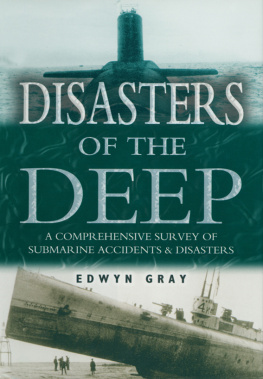


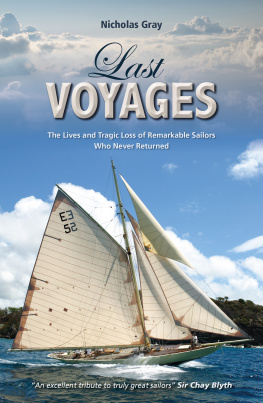


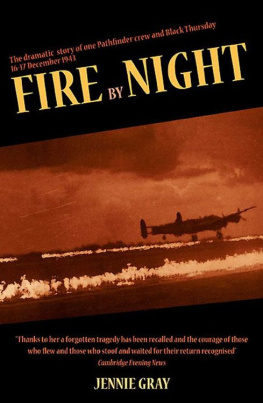
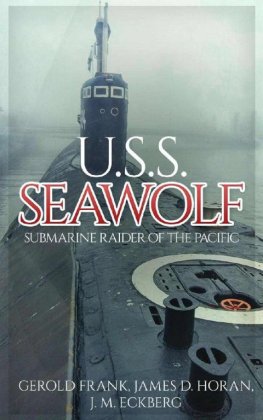
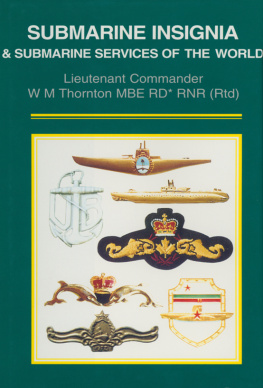

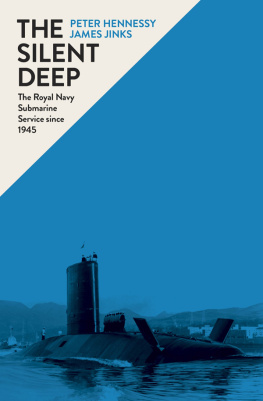
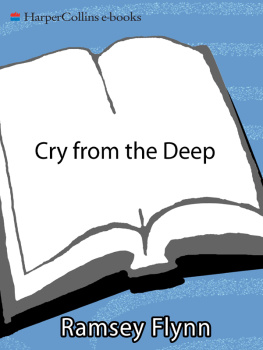





 ONE
ONE